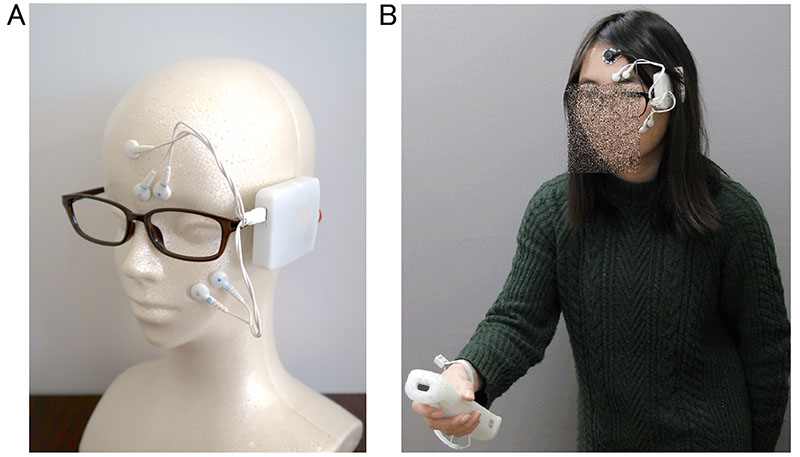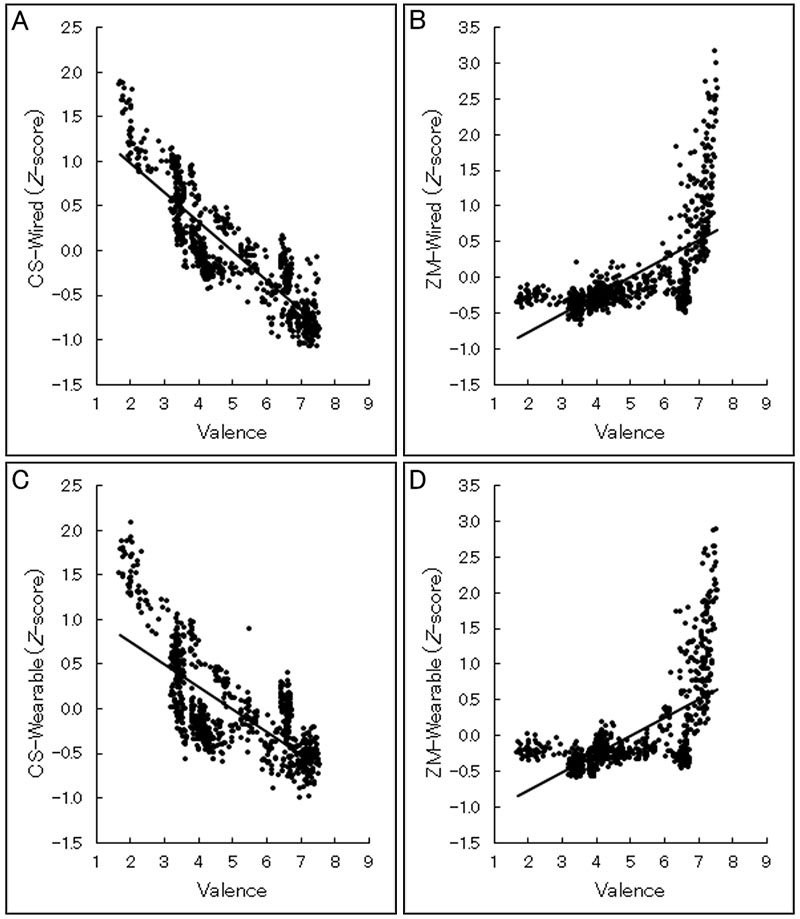SATO Wataru Laboratory
Emotional valence sensing using a wearable facial EMG device
(Sato, Murata, Uraoka, Shibata, Yoshikawa, & Furuta: Sci Rep)
Emotion sensing using physiological signals in real-life situations can be practically valuable.
Previous studies developed wearable devices that record autonomic nervous system activity, which reflects emotional arousal.
However, no study has determined whether emotional valence can be assessed using wearable devices.
To this end, we developed a wearable device to record facial electromyography (EMG) from the corrugator supercilii (CS) and zygomatic major (ZM) muscles.

To validate the device, in Experiment 1, we used a traditional wired device and our wearable device, to record participants' facial EMG while they were viewing emotional films.
Participants viewed the films again and continuously rated their recalled subjective valence during the first viewing.
The facial EMG signals recorded using both wired and wearable devices showed that CS and ZM activities were, respectively, negatively and positively correlated with continuous valence ratings.

In Experiment 2, we used the wearable device to record participants' facial EMG while they were playing Wii Bowling games and assessed their cued-recall continuous valence ratings.
CS and ZM activities were correlated negatively and positively, respectively, with continuous valence ratings.

These data suggest the possibility that facial EMG signals recorded by a wearable device can be used to assess subjective emotional valence in future naturalistic studies.
Return to
Recent Research.
Return to
Main Menu.


